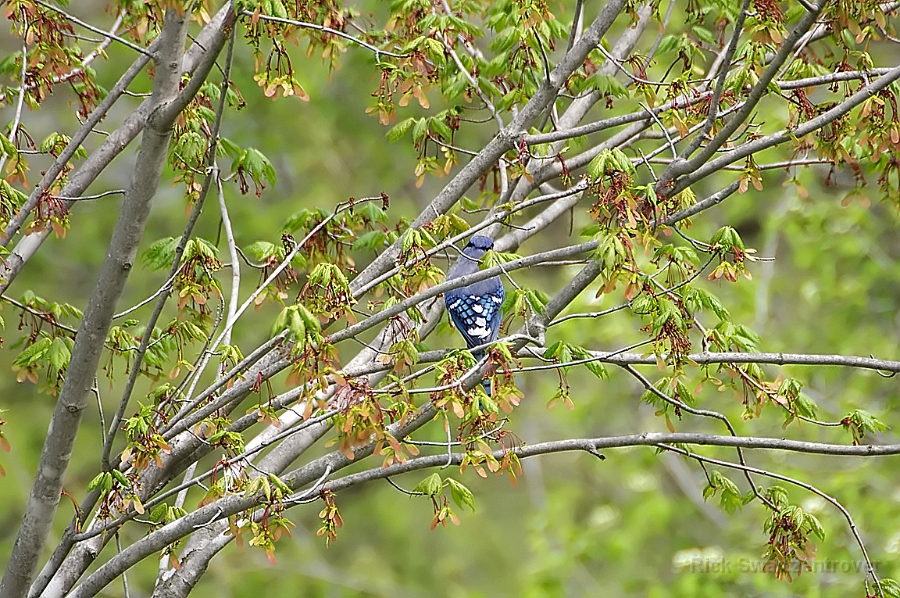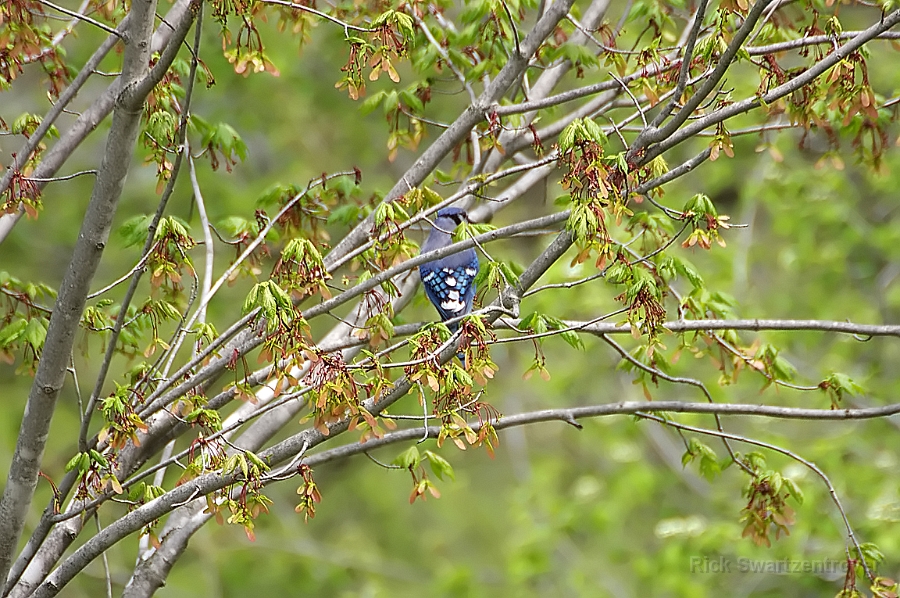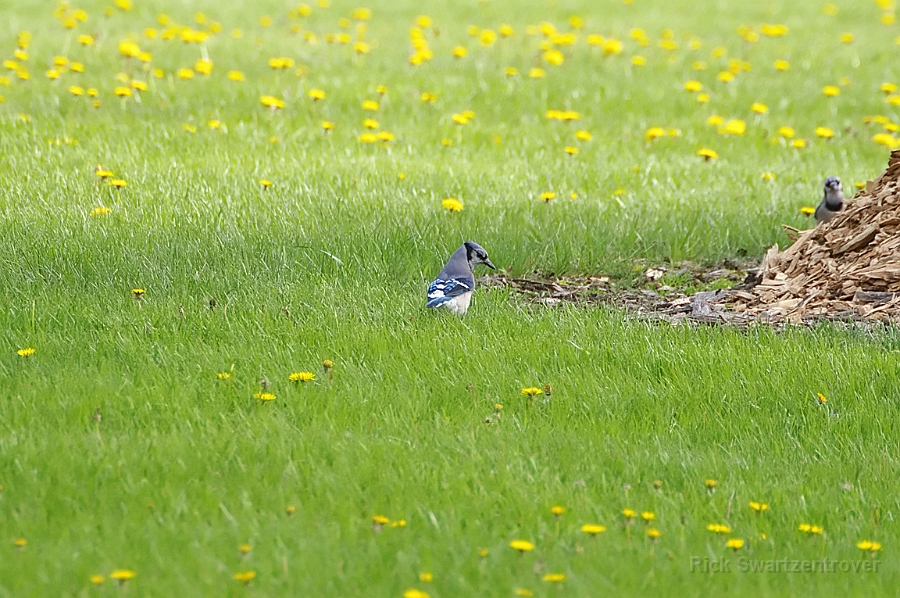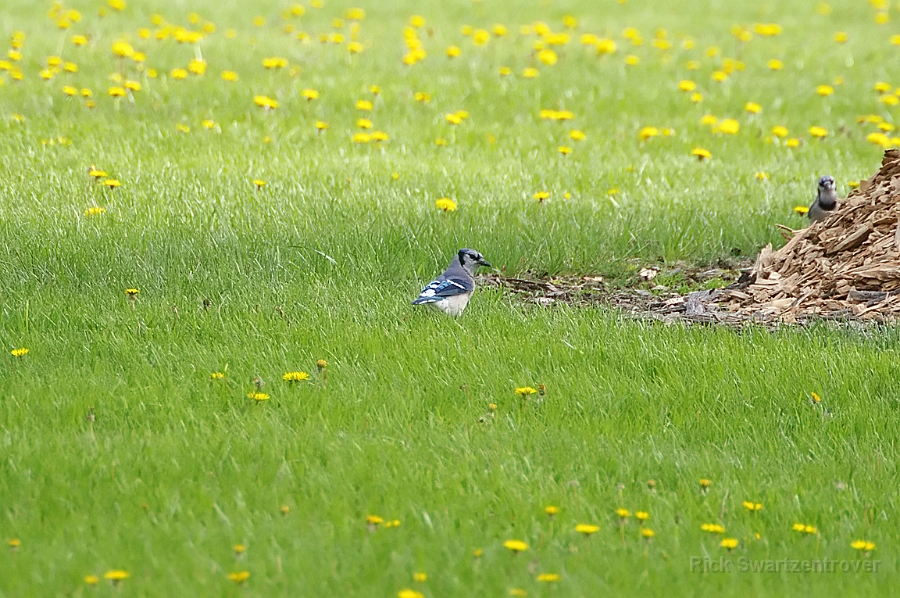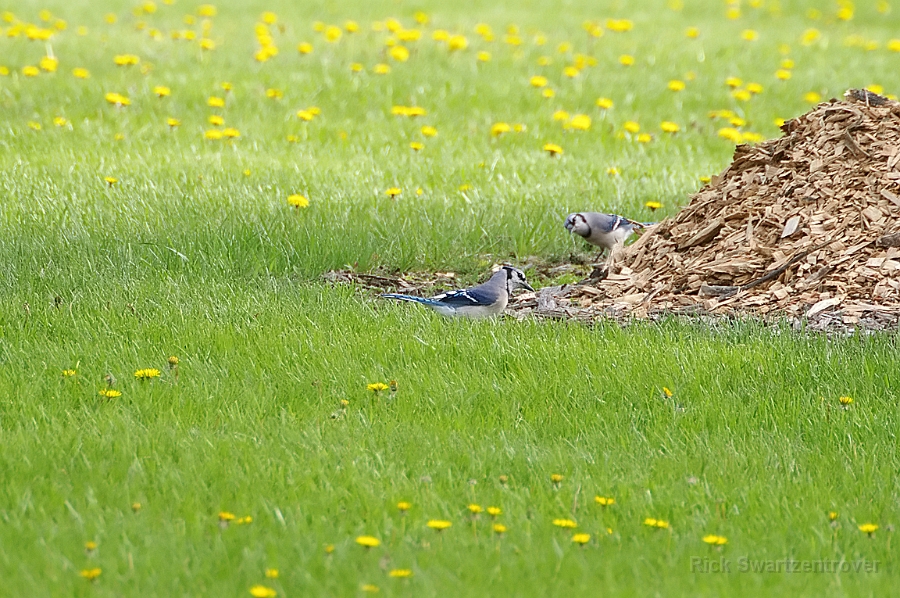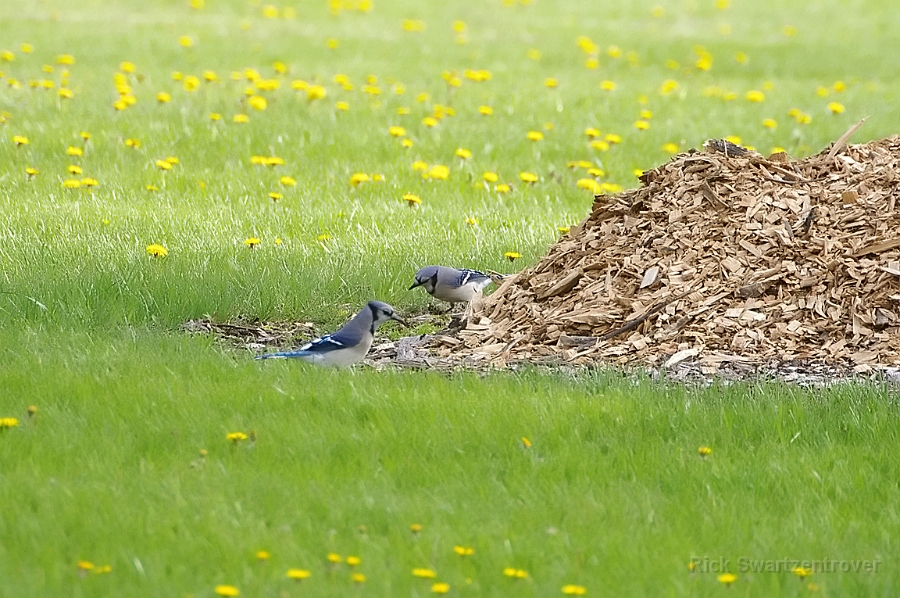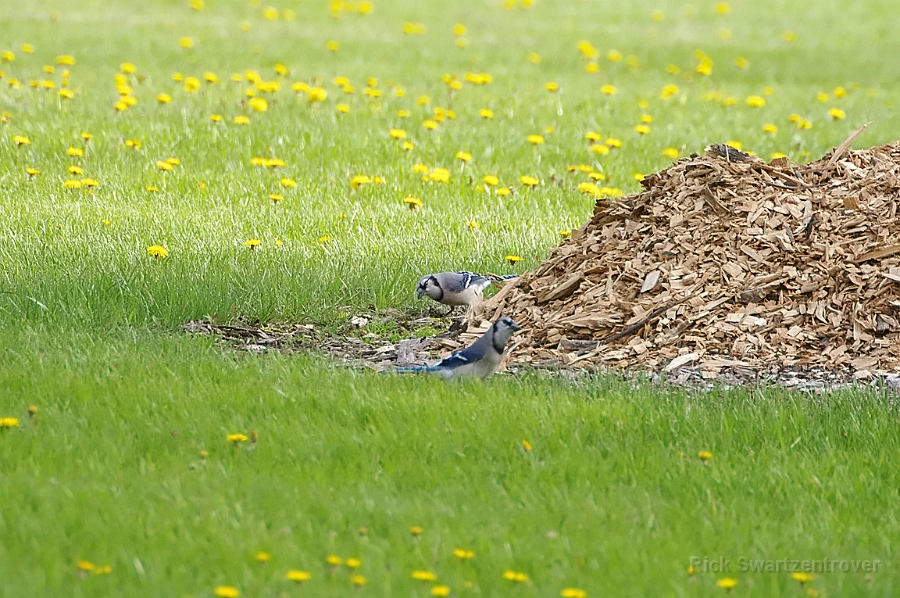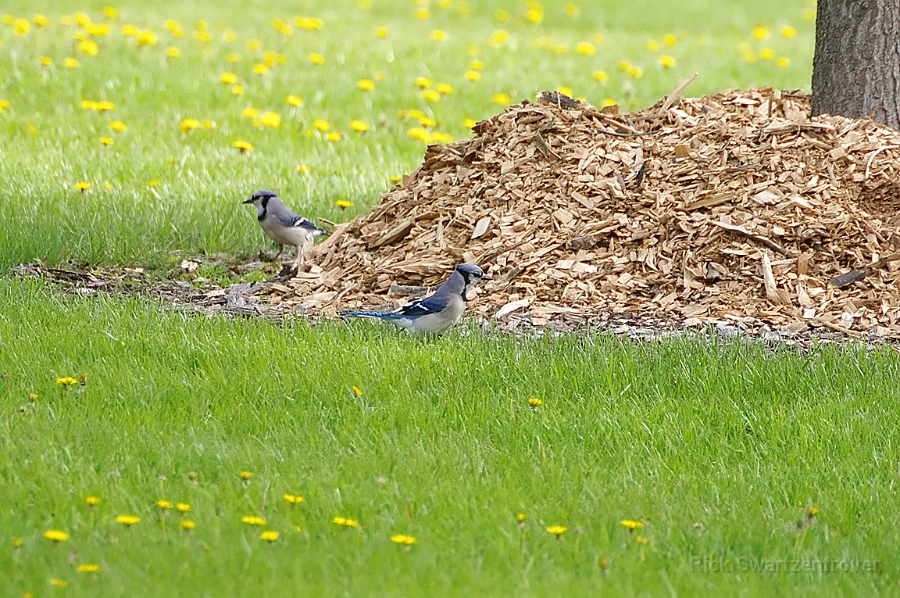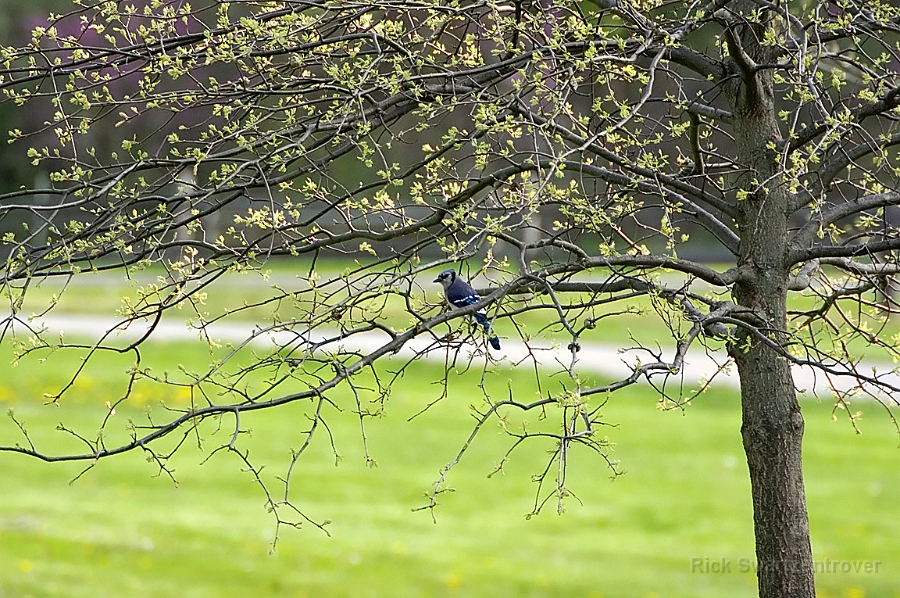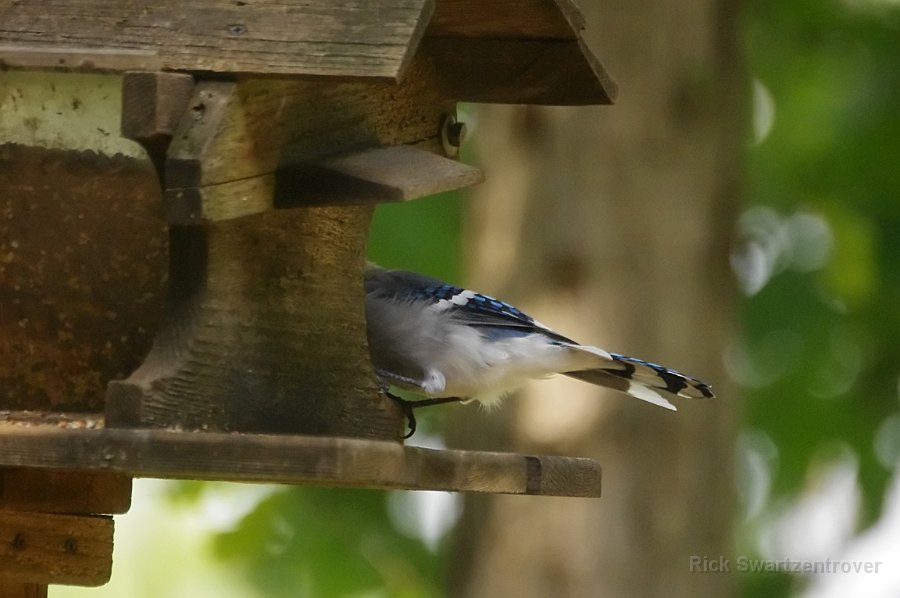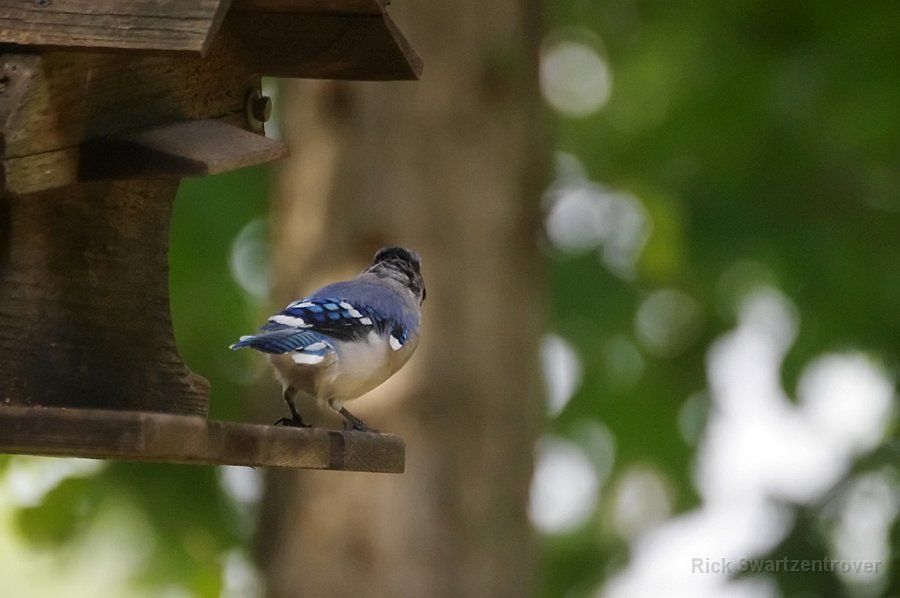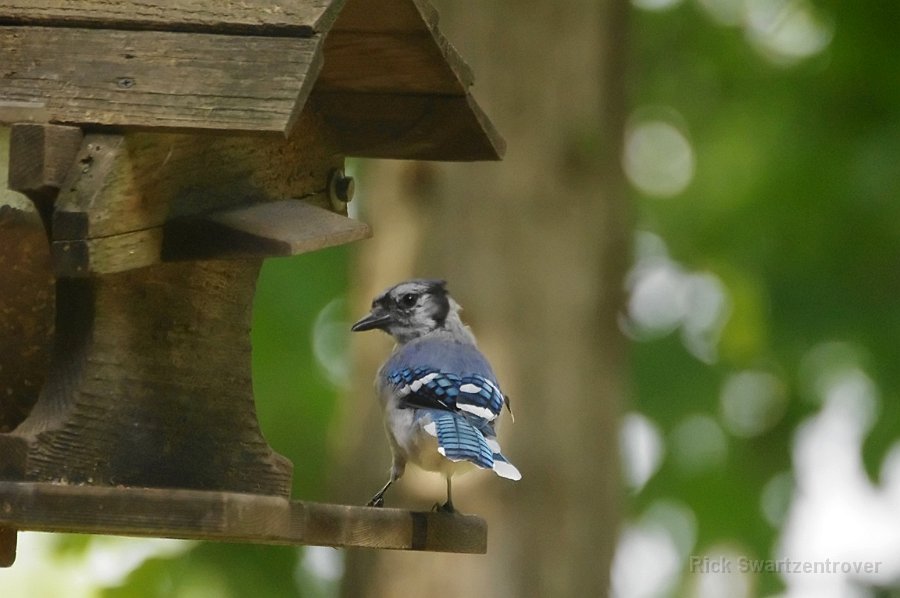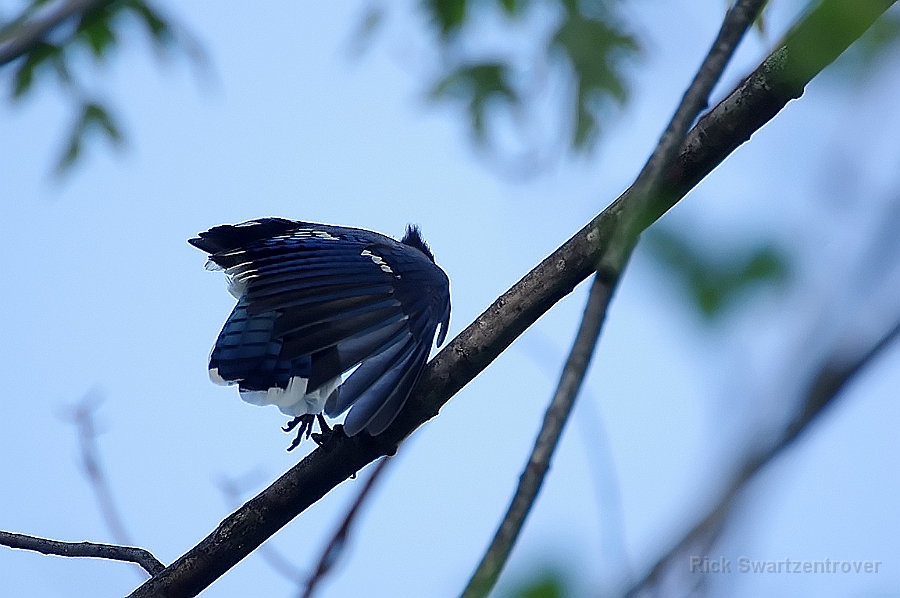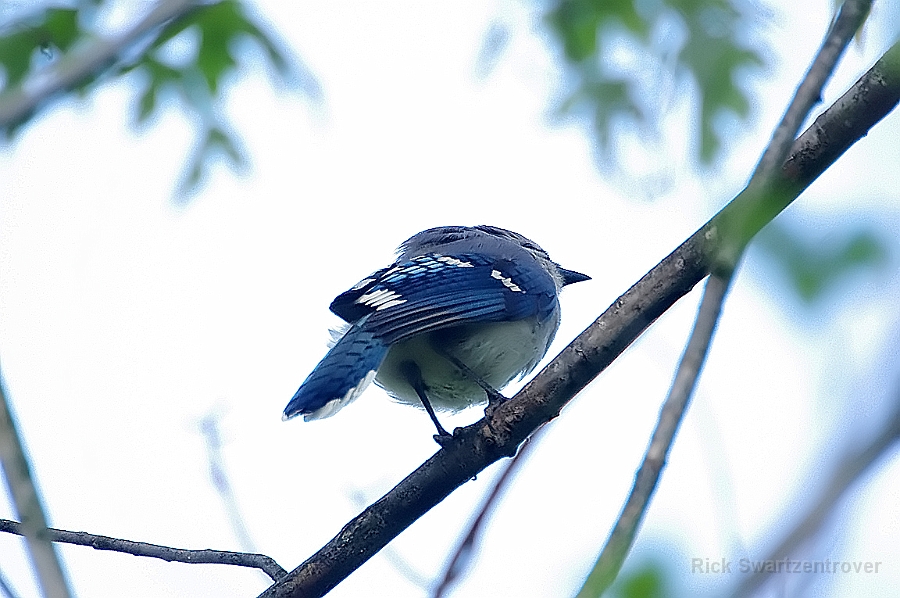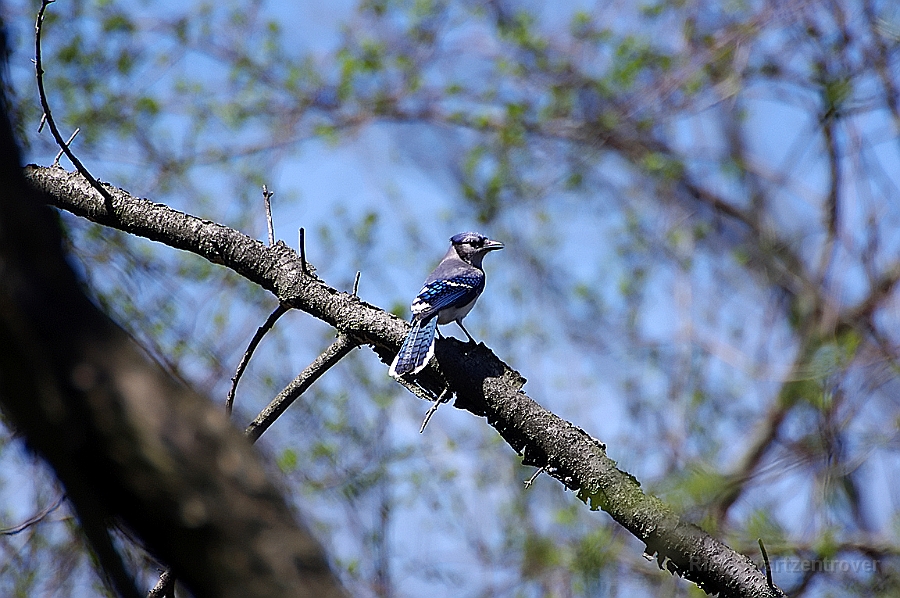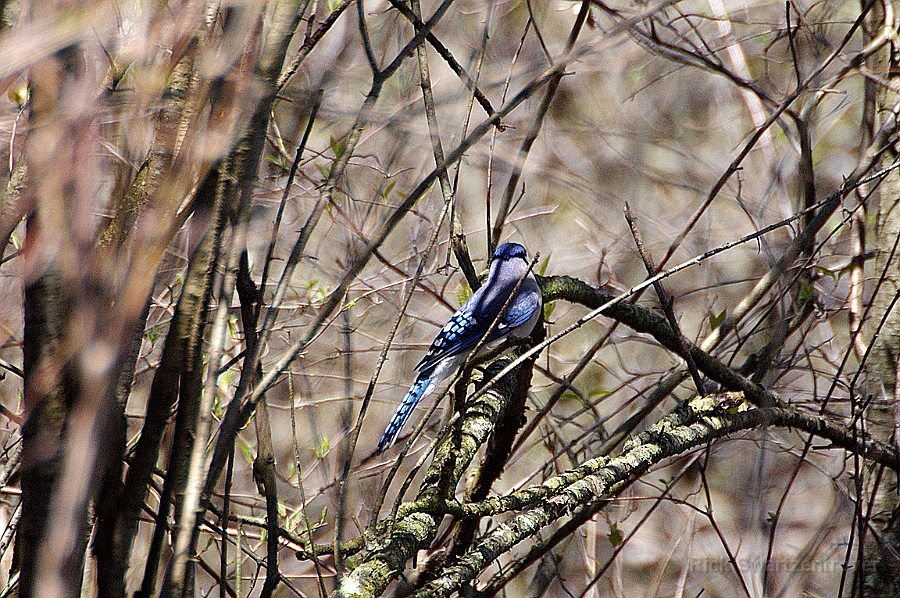|
|
|
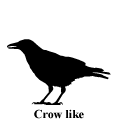 |
Blue Jay
|
| Cyanocitta cristata | |
This common, large songbird is familiar to many people, with its perky crest; blue, white, and black plumage; and noisy calls. Blue Jays are known for their intelligence and complex social systems with tight family bonds. Their fondness for acorns is credited with helping spread oak trees after the last glacial period.
Interesting Information
-
Thousands of Blue Jays migrate in flocks along the Great Lakes and Atlantic coasts, but much about their migration remains a mystery. Some are present throughout winter in all parts of their range. Young jays may be more likely to migrate than adults, but many adults also migrate. Some individual jays migrate south one year, stay north the next winter, and then migrate south again the next year. No one has worked out why they migrate when they do.
-
Blue Jays are known to take and eat eggs and nestlings of other birds, but we don't know how common this is. In an extensive study of Blue Jay feeding habits, only 1% of jays had evidence of eggs or birds in their stomachs. Most of their diet was composed of insects and nuts.
-
The Blue Jay frequently mimics the calls of hawks, especially the Red-shouldered Hawk. These calls may provide information to other jays that a hawk is around, or may be used to deceive other species into believing a hawk is present.
-
Tool use has never been reported for wild Blue Jays, but captive Blue Jays used strips of newspaper to rake in food pellets from outside their cages.
-
Blue Jays lower their crests when they are feeding peacefully with family and flock members or tending to nestlings.
-
At feeders in Florida, Red-headed Woodpeckers, Florida Scrub-Jays, Common Grackles, and gray squirrels strongly dominate Blue Jays, often preventing them from obtaining food.
-
The pigment in Blue Jay feathers is melanin, which is brown. The blue color is caused by scattering light through modified cells on the surface of the feather barbs.
-
The black bridle across the face, nape, and throat varies extensively and may help Blue Jays recognize one another.
-
The oldest known wild, banded Blue Jay lived to be at least 17 years 6 months old.
Description
Adult Description
-
Length Range: 28 cm (11 in)
-
Weight: 85 g (3 oz)
Large crested songbird with broad, rounded tail. Blue Jays are smaller than crows, larger than robins.
White or light gray underneath, various shades of blue, black, and white above.
Sex Differences
Sexes Similar
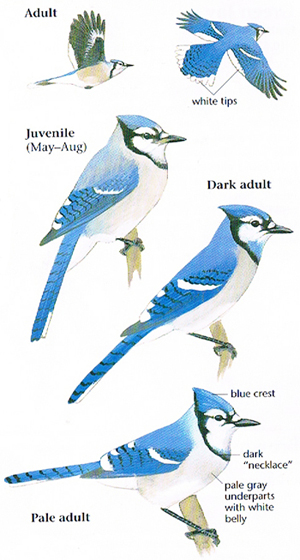
Photo taken from: The Sibley Field Guide by David Allen Sibley
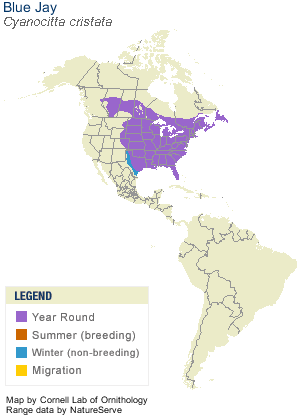
© 2003 Cornell Lab of Ornithology
|
Habitat |
|
Blue Jays are found in all kinds of forests but especially near oak trees; they're more abundant near forest edges than in deep forest. They're common in urban and suburban areas, especially where oaks or bird feeders are found. |
|
Behavior |
|
|
Food |
|
Blue Jays glean insects and take nuts and seeds in trees, shrubs, and on the ground; they also eat grains. They also take dead and injured small vertebrates. Blue Jays sometimes raid nests for eggs and nestlings, and sometimes pick up dead or dying adult birds. Stomach contents over the year are about 22 percent insect. Acorns, nuts, fruits, and grains made up almost the entire remainder. Of 530 stomachs examined, traces of bird eggs and nestlings were found in only 6 stomachs, although a search was specially made for every possible trace of bird remains. Blue Jays hold food items in feet while pecking them open. They store food in caches to eat later. |
Taxonomy
| Kingdom: | Animalia |
| Phylum: | Chordata |
| Subphylum: | Vertebrata |
| Class: | Aves |
| Order: | Passeriformes |
| Family: | Corvidae |
| Genus: | Cyanocitta |
| Species: | Cyanocitta cristata |
| Subspecies: | Cyanocitta cristata bromia |
| Cyanocitta cristata cristata | |
| Cyanocitta cristata cyanotephra | |
| Cyanocitta cristata semplei |
Similar Species |
|
|
Bird Sound |
|
Blue Jays make a large variety of calls. The most often heard is a loud jeer, Also makes clear whistled notes and gurgling sounds. Blue Jays frequently mimic hawks, especially Red-shouldered Hawks. |
|
Eggs look like this |
|
Photo taken from: ARCTOS Collaborative Collection Management Solution |
